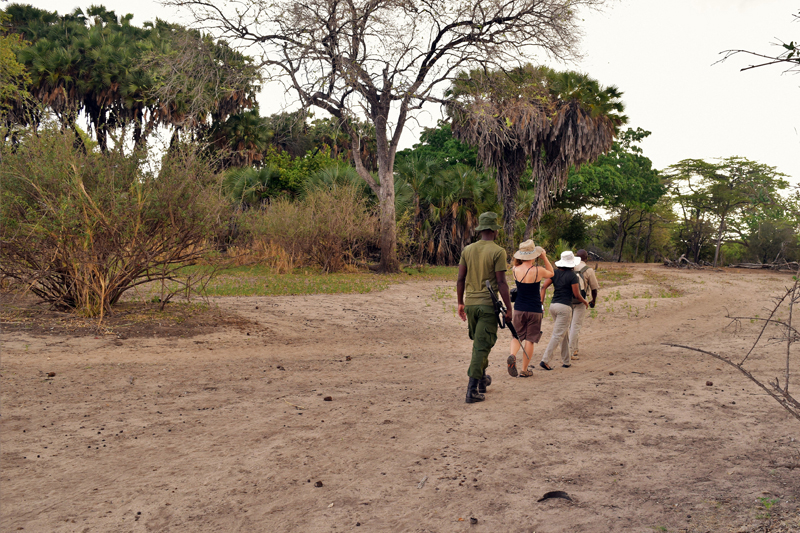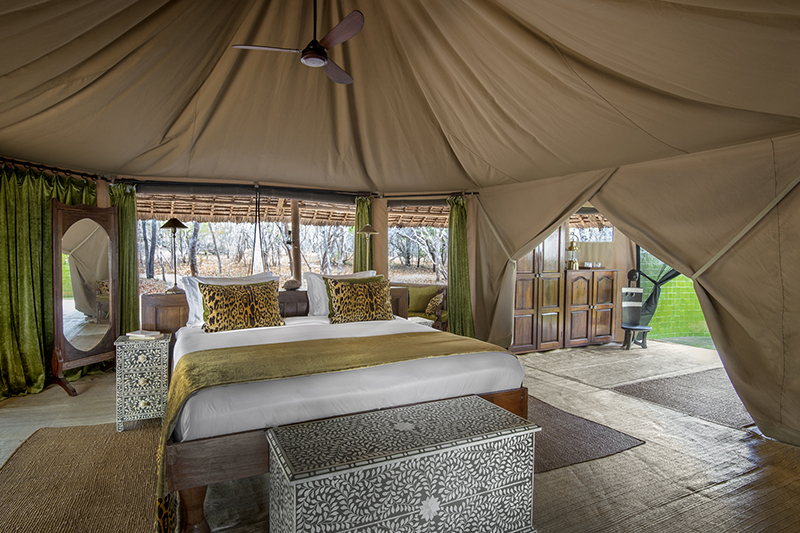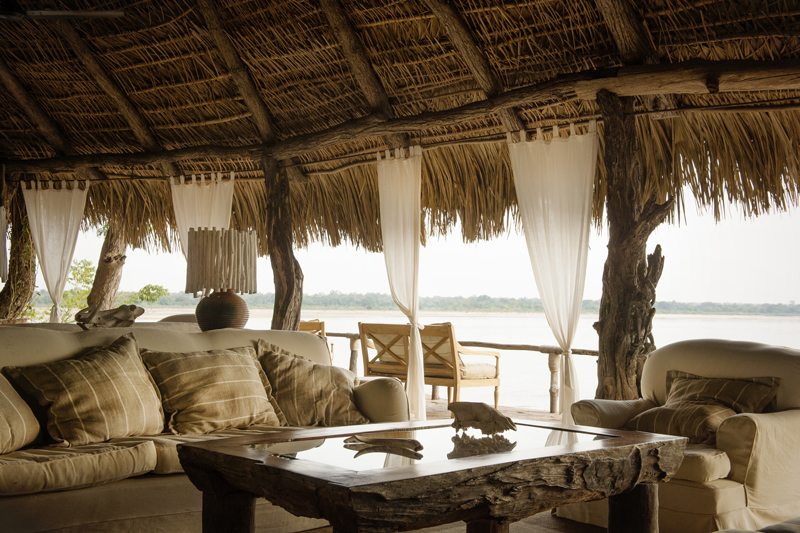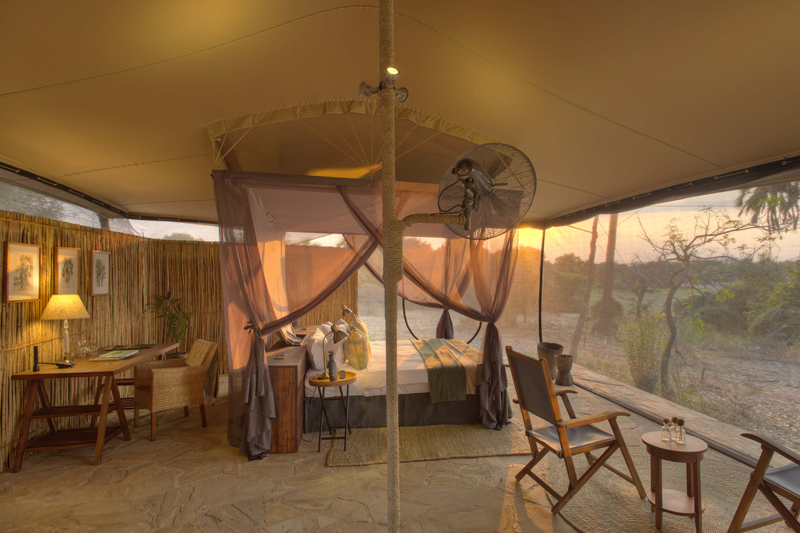Selous Impala Camp
Selous Impala Camp is a tented lodge located amongst riverine woodland on the banks of the Rufiji River in the north-east corner of the vast Nyerere National Park.
Selous Impala is an excellent all round camp offering the full Nyerere experience with superb boat cruises on the Rufiji River and game drives in the productive north-eastern section of the reserve. The tented accommodation is very comfortable without being overly luxurious or spacious, and this sets the tone for the rest of the product. Selous Impala is an excellent four star property which is not trying to be too luxurious. The guides are very good and the food and service also excellent. We feel they get the balance between quality and ambience just right. The camp also offers a mixture of communal and private dining which works well. In general, Selous Impala is a great option for people that want a fairly smart, comfortable and well run camp, in a good location, without paying for five star accommodation and services.
Rooms
Accommodation consists of five standard tents, one quad tent and two family units, each individually raised on a wooden platform with a furnished verandah and views towards the river or over a channel off the main river. All tents are en suite with the bathroom divided into a flush loo section, plumbed shower section and vanity basin with small dressing area. The five standard tents are cosy and comfortably furnished with a small bureau, chair and ceiling fan, with a bathroom to the rear. The quad tent is slightly larger with a king bed and two additional single beds for children. One of the family units comprises two ensuite standard tents side by side on a raised platform – the tents do not connect internally so this unit is suitable for families with older children. The second family comprises two en suite bedroom sections partially separated by a canvas partition and includes a double and single bed on one side and three single beds on the other.
Central Areas
The spacious central areas include the bar, dining and sitting room and are raised high on extensive wooden decking under a large makuti thatch. Meals are taken alfresco when the weather permits. A few paces away there is a small decked area around the swimming pool. The camp is not fenced and it is common for wildlife to move through.
Facilities
Wi-Fi – Yes
Power for Charging – Yes
Swimming Pool – Yes
Habitat & Wildlife
The Nyerere is Africa’s largest wildlife sanctuary, covering over 54,600 sq. kms. (almost the size of Ireland). The region is dominated by the Great Ruaha River and Kilombero rivers which join to form the Rufiji, East Africa’s greatest waterway.
One of the world’s last great wilderness areas, the Nyerere is scarcely known even today. It is an inaccessible region, dissected by water courses which become raging torrents during the rains, forcing the animals onto high ground. In the dry season, the rivers wither away to form ‘sand rivers’. Having a poor network of roads, and limited facilities, this wilderness has been virtually ignored in the pilgrimage to see East Africa’s wildlife heritage.
The reserve is formerly named after the famous hunter and explorer, Frederick Courtney Selous, but it was the Germans who first established a game reserve here in 1905. The first warden was an eccentric former ivory hunter called C.P. Ionides (known locally as the ‘Snake Man’) and it was he who helped develop the reserve into its present size. Under the wardenship of Brian Nicholson, the Nyerere became an example of intelligent wildlife management; it is divided into controlled areas and human habitation is prohibited. However, groves of mango trees scattered through the bush are grim reminders that the main southern caravan route from Lake Nyasa passed through this region; they grew from the stones dropped by slaves as they were marched towards the slave markets of Zanzibar.
Local game animals include elephant, buffalo, giraffe, eland, sable antelope, greater kudu, wildebeest, hartebeest, impala, waterbuck, bushbuck, tsessebe, common reedbuck, Bohor reedbuck, zebra, red duiker, blue duiker, common duiker, klipspringer, oribi, suni, grysbok, hippo, lion, leopard, wild dog, caracal, serval, crocodile, warthog, bushpig, spotted hyaena, jackal, honey badger, aardvark, porcupine, mongoose and bushbaby. The birdlife too is superb, with over 350 species having been recorded.
The habitat and scenery varies significantly over short distances: purple rolling hills, rock-strewn plains, ‘sand rivers’ lined with salt bush, swamps and marshes, rocky gorges, savannah bush country and miombo woodland. Tsetse fly are present in the Nyerere but not usually a major issue in the core game viewing areas.
Activities
Game drives by day are conducted in open 4×4 vehicles with a shade canopy. Boat cruises are available on the Rufiji River system and very productive, especially for birding, and fishing is available too at an extra cost. Guided walks are also available, at an extra charge, and should be pre-booked. Specialist birdwatching safaris are operated at no extra charge and are suitable for those who wish to do a day or two of good birding. For a more significant supplement you can fly-camp for a night or two in the bush, from June to October and with a minimum age 16 years, and perhaps combined with a walking safari.
Seasons
Selous Impala is open from June through to March each year, though the best time for game viewing is between July and October.
Selous Impala accepts children of all ages but Nyerere National Park in general is perhaps best for families with slightly older children from 10 years and above. There are two good family units at Selous Impala (one more suitable for older children as the rooms do not connect internally) and a spacious quad tent.
Selous Impala is located inside the Nyerere National Park and therefore their prime focus is on protection of the wildlife area and fees paid by visitors go towards this. Selous Impala has also been in operation for many years and employs staff from local villages outside the park as well as further afield. The camp is completely solar powered.





















